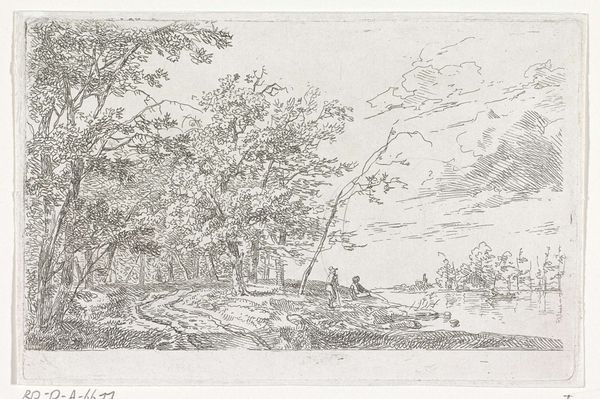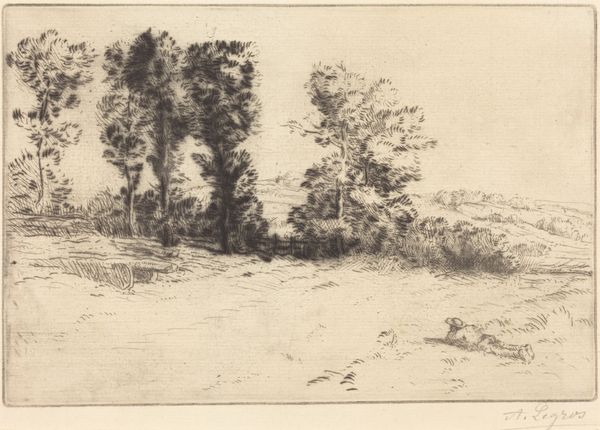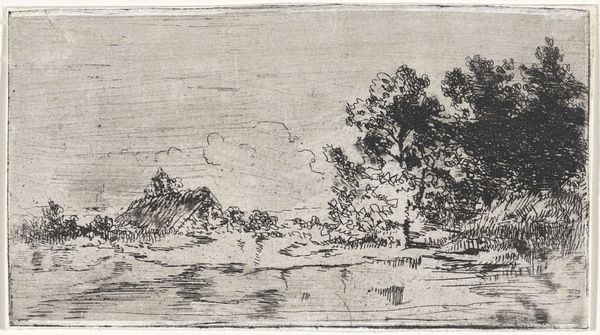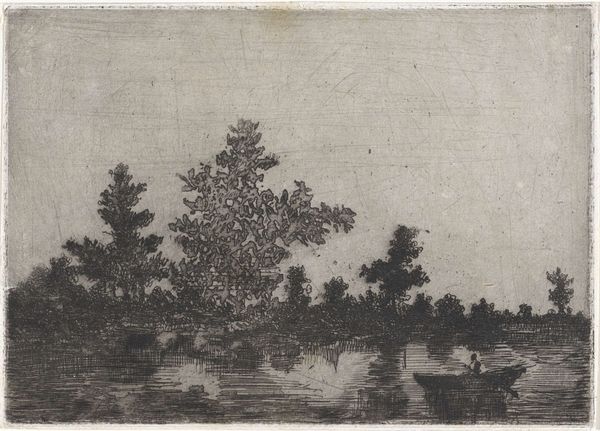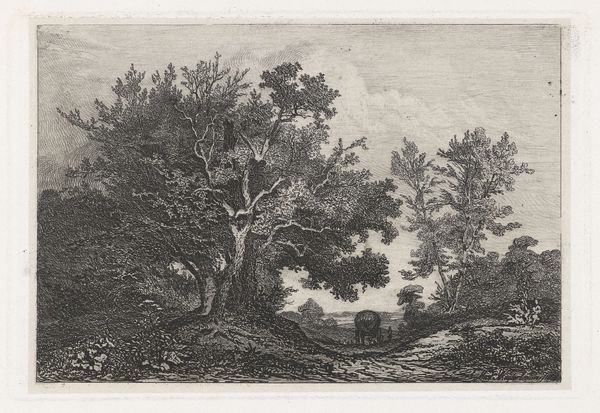
#
pencil drawn
#
photo of handprinted image
#
amateur sketch
#
natural shape and form
#
light pencil work
#
pencil sketch
#
old engraving style
#
incomplete sketchy
#
pencil work
#
repetition of white colour
Dimensions: height 71 mm, width 127 mm
Copyright: Rijks Museum: Open Domain
This is a small etching, made by Arnoud Schaepkens, depicting a thatched hut by the water. It's made with an economy of means, a stripped-down aesthetic, which speaks to its likely status as a study or preliminary sketch. Schaepkens used the etching process here, drawing an image into a wax-coated metal plate with a sharp needle, then bathing it in acid. The acid bites into the exposed metal, creating an image that can be inked and printed. Notice the variations of tone achieved in the sky and water, which he created by varying the density of the etched lines. Etching enabled artists to produce images in multiples, which democratized visual culture in the 19th century. This print is a product of its time, reflecting an emerging industrial system of art production. Yet it is also a highly skilled, artisanal process that shows a close engagement with landscape. When we look closely at how things are made, the usual categories of art and craft begin to blur.
Comments
No comments
Be the first to comment and join the conversation on the ultimate creative platform.



